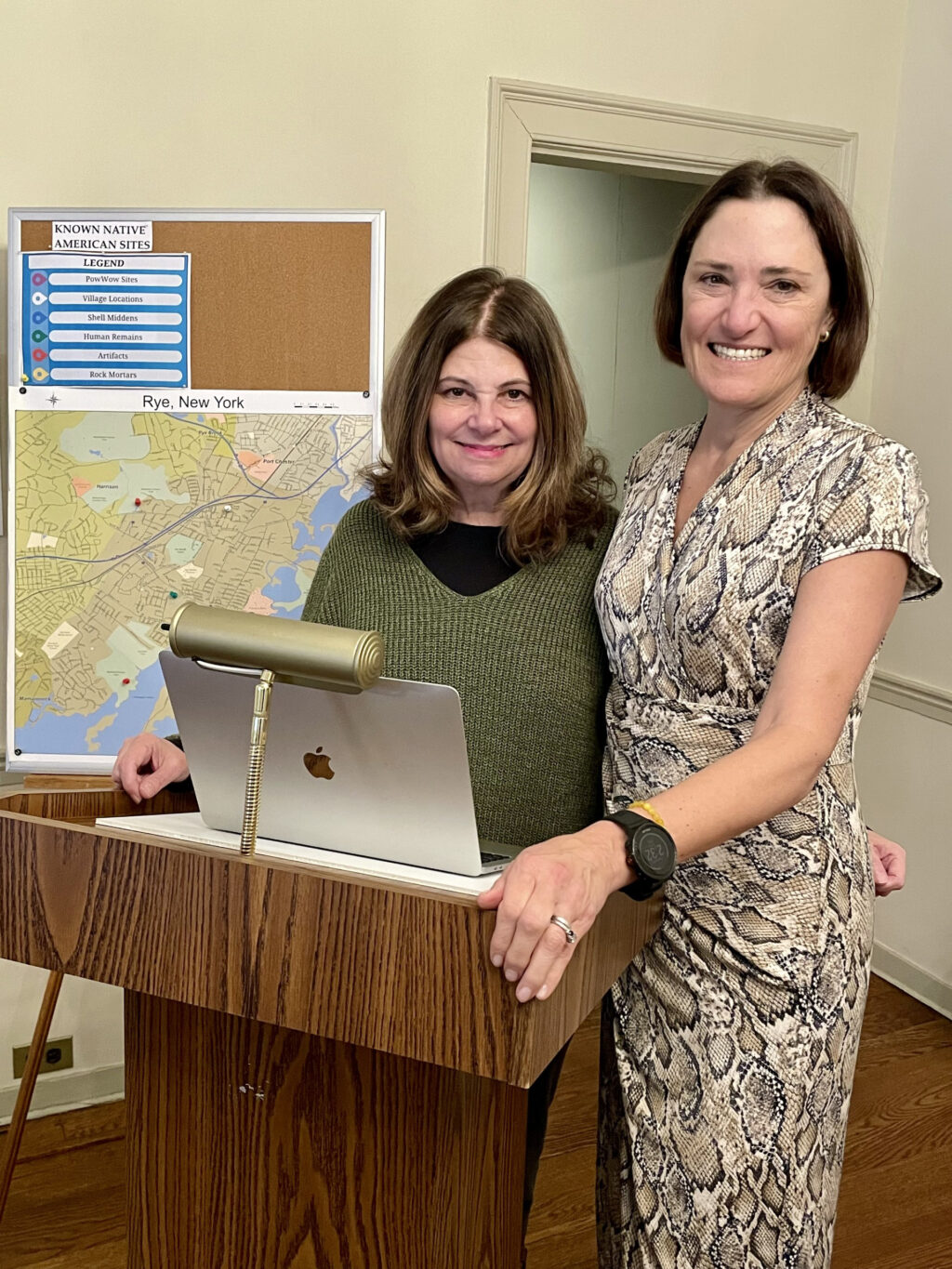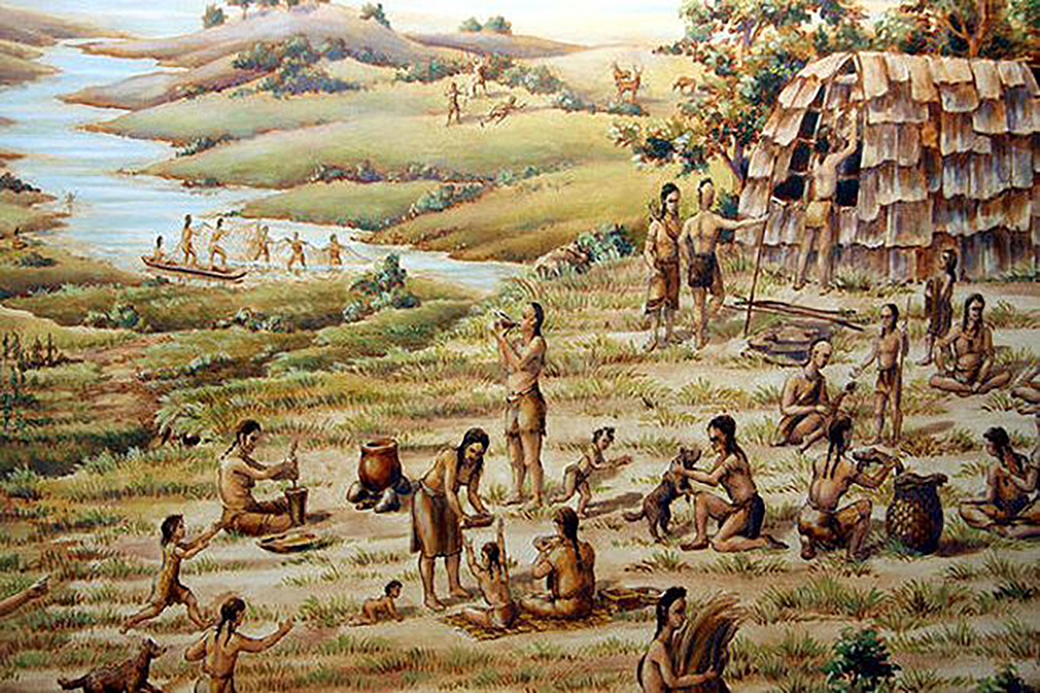Native Americans resided in the Rye area for thousands of years, but were quickly dispersed and appeared to disappear from our area, the Rye Historical Society’s Joie Cooney told an audience of more than 100 people recently at the Rye Free Reading Room.
This area had been the ancestral home to various bands of native peoples who were part of the broader group of Lenape or Delaware Indians, and they spoke a tongue belonging to the Algonquian language family, Cooney said in a presentation entitled “Native Americans in Rye.”
Cooney, a long-time Rye resi-dent and historical society Auxiliary Board Member, kicked off a year-long celebration by The Rye Historical Society of its 60th anniversary. She aimed to raise awareness of the complex history of the area’s Native Americans, incorporating materials from the historical society’s collection while providing insights from various historians as well as Native American descendants of the indigenous people.
Cooney emphasized that the Lenape have often been mistakenly referred to as “Siwanoy,” a name they almost certainly never called themselves, but which nonetheless has become deeply entrenched in our literature. Many scholars call them “Munsee Lenape” — after the name of the dialect they spoke. However, like other native groups, they tended to call themselves by the names of their local villages.
In the warmer weather, several hundred families of Lenapes had encampments in Rye, where they farmed, hunted, and fished. They also enjoyed an abundance of shellfish, whose shells were made into wampum, a valuable com-modity. In cold weather they moved to the more protected woods of northern Westchester.
According to Cooney, the Lenape were generally peaceful, at least prior to the arrival of the Europeans (especially the Dutch in New Amsterdam). Their numbers were reduced by diseases brought by settlers and by losses suffered in a two-year conflict with the Dutch, known as “Kieft’s War.”

Peaceful relations between the Lenape and settlers in Rye led to several land transfers that are doc-umented by deeds. A prominent “sachem” (leader) of the Lenape signatories was called “Shenorock,” a name that was adopted by one of the clubs in Rye.
Cooney devoted much of her lecture to describing the rapid decline and disappearance of the Native Americans from Rye and the surrounding area. She cited several sources, especially Baird’s history of Rye, which in 1871 stated: “There is a painful interest in gathering up the scanty knowledge that has come down to us about the aboriginal inhabitants of this region. Here as elsewhere throughout our land, they have faded away from sight and mem-ory, leaving few and faint traces of their sad history.
In addition to Baird’s “Chronicle of a Border Town,” Cooney strongly recommends Robert Grumet’s seminal work “The Munsee Indians: A History,” published in 2009, that she says, “really tells the story of the Munsee Lenape in our area.”
In closing, she said, “It’s an honor and a privilege to share the story the Munsee Lenape with our community. They are an important part of Rye history, and the Historical Society is committed to preserving and sharing everyone stories. While there are some gaps in our knowledge and understanding of the Lenape in Rye, we will continue to share new information as it becomes available.”
There currently is an exhibit at the Square House containing a map of known Native American sites in Rye including villages along with Lenape artifacts from the Morgan H. Seacord collection.
This article was updated on March 8.















